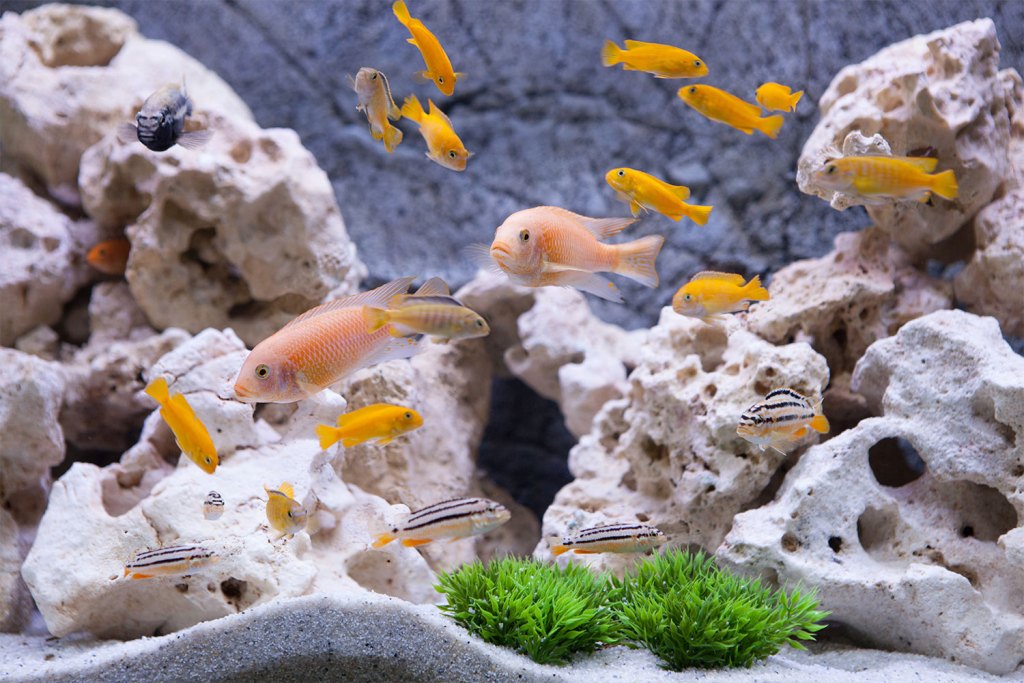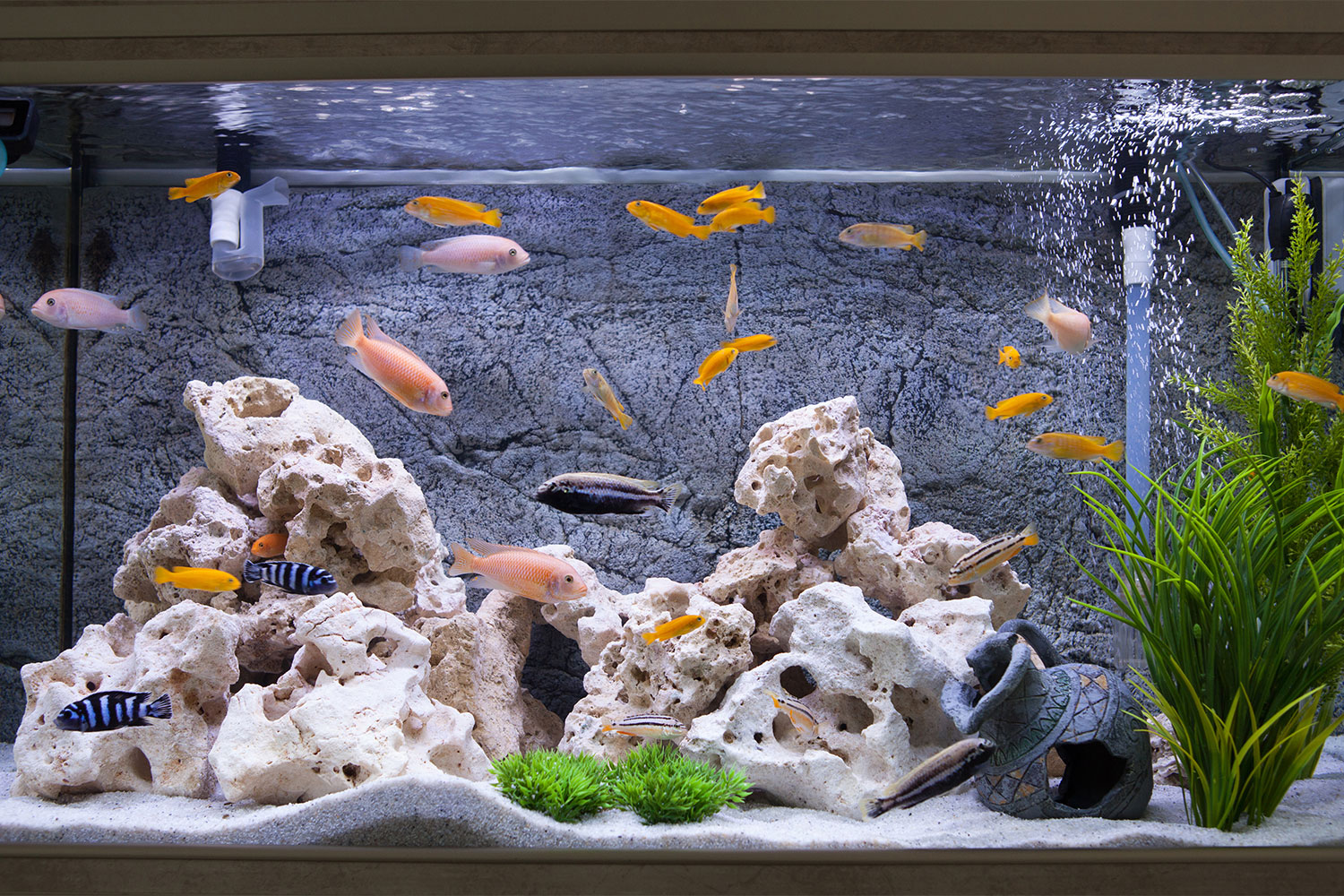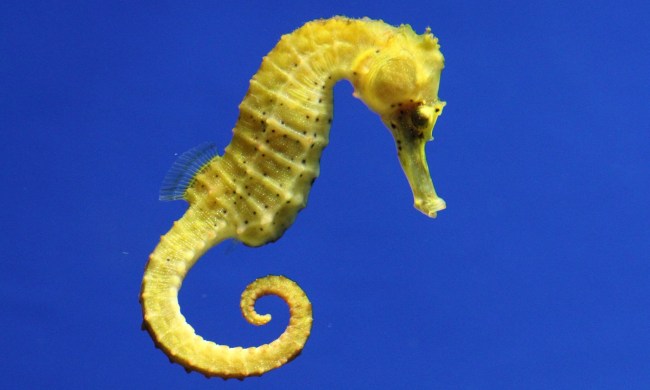Your aquatic habitat can easily be spruced up with the addition of some artistic flair. Even if you don’t consider yourself a naturally talented artist, with these simple instructions you will be able to pull off something special. Putting your own personal touch on the background of your aquarium will make your home even more special.
Top benefits of creating an aquarium background
Your aquarium already looks pretty cool. You’ve taken time to select the right flora and fauna species. You’ve added some landscape architectural features. Everything looks great, but there’s just something that keeps bothering you. Maybe you can see the wires in the back of your aquarium. Perhaps, you don’t like the look of your painted wall or wallpaper as it reflects through the glass of your watery habitat. You might just want to add a bit more of your own personal style to your fish tank. You might just want to look into some DIY aquarium background ideas for a splash of creativity and uniqueness.

It doesn’t matter why you are interested in creating a new aquarium background. It’s a fun and easy process that you will enjoy. Just think about it. You love spending time enjoying the movement of life in your tank. Wouldn’t it take things up a notch if you created a unique background for your fish? We definitely think so!
A new background will add depth to your landscaping and ensure that none of the unsightly wires of your fish tank show through. Creating a new background is a great DIY project that you can do alone or involve the whole family. This is your chance to get as creative as you like. Express yourself and bring your own sense of style to your aquatic habitat. Who knows? Your fish might even like the change of scenery, too!
Designing your new background
The design you choose will dictate the steps you need to take to make your new background. You could do something simple such as a single color background. You could use something like a drawing your child made. You could also choose to use a printer to print a photorealistic background or one that uses a piece of existing artwork. You are only limited by your imagination here.
If you are really unsure what kind of background you want, you could always work with a few different designs and then see which one looks best with your fish tank. This should be a fun and experimental process. Don’t get discouraged if you don’t love your new background. Making one is really quick and easy as you will see in the following steps.

Constructing your fish tank background
Start by measuring your aquarium. You will need to know its height and width. Knowing this information will allow you to create a background that is just the right size. Consider designing your background slightly larger than the actual size so you can cut it down to the perfect fit.
- Decorate your background. As mentioned previously, you can be as simple or elaborate as you like here. You can custom draw, paint, or create a collage. You can also choose to print out a picture of your choice. Be as creative as you like. If you are struggling, consider using colors, shapes, or designs that match or accent the colors you already have in your tank. You might even want your background to match a piece of furniture or some decorative object in the room.
- Test out your design. Using a piece of lightweight tape, place your design in the back of your tank. If you decided to use multiple test designs, now is the time to compare them. If you don’t like how your background looks, get back to the drawing board and consider creating or printing another option. It doesn’t take that much time. When you are happy with the results, then you can move on to the next step.
- Protect your background. Using a piece of clear contact paper over your design will help protect it from the moisture in your fish tank. Simply place the contact paper over your design and smooth out any air bubbles. You can use a flat surface such as a ruler to assist you here.
- Attach your background. Now it’s time to put your masterpiece in place. Attach it to the tank with double-sided tape. You will probably need to periodically replace the tape. It’s a very simple process. You might also decide to rotate a few of your favorite designs instead of sticking to just one. The choice is really up to you. You can even create different backgrounds for the seasons or special ones for holidays. Have fun and get creative with this exciting new project.
Isn’t that much cooler?
Custom creating items for your pets is a fun and rewarding process. It can take some trial and error, but many people find it more enjoyable than simply going out and purchasing something ready-made. Plus, making a background is pretty inexpensive. Your new DIY aquarium background is a fun and easy project that you and your whole family will enjoy. Children are especially excited about opportunities to be creative like this. So, look around for some inspiration and get to designing!


